| Japanese | English |
| Microphone mixer | SONY | MX-50 |
| USB I/F | Roland | UA-5 |
| PC | SONY | PCG-Z505GR/K |
| OS | Microsoft | Windows2000 Professional |
| Measurement software | Yoshimasa Electronic | DSSF3 |
| Stereo amplifier | audio-technica | AT-SA55 |
| Speaker | BOSE | 101VM |
| Microphone | SONY | C-355 |
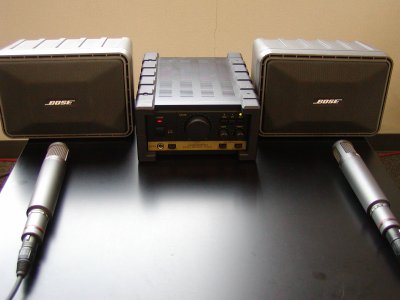
After the equipments are ready, start Realtime analyzer, and open the signal generator and the oscilloscope.
In the signal generator, two tones with different frequencies can be generated. In the signal generator, open "Tone" tab. Check the operation of the signal generator before a measurement.
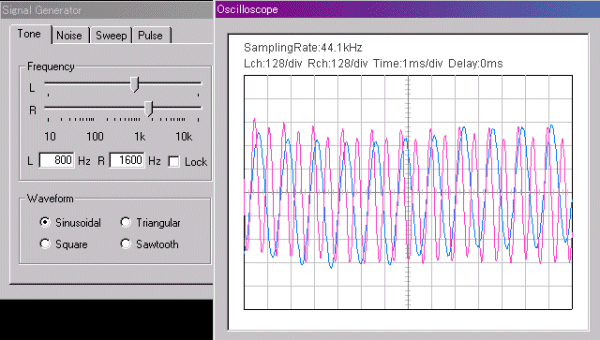
See the figure above. Sinusoidal waves of 800 Hz and 1600 Hz are generated from left and right channels. The inputs from two microphones are displayed in real time by the oscilloscope.
Next, let's see the phase relationship of two speakers.
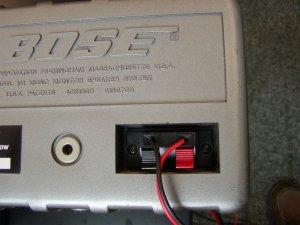 |
This is the correct connection. |
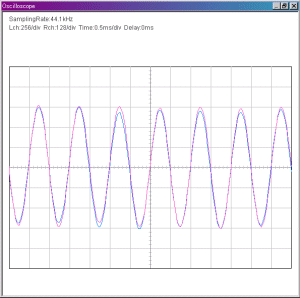 |
Two 1kHz tones are output from two speakers. As you see, two waveforms are in-phase. |
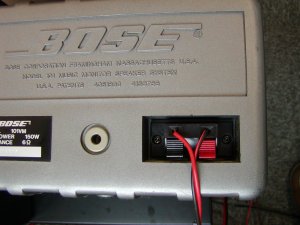 |
In this case, the polarity of the left channel speaker is reversed. |
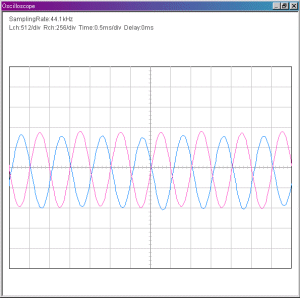 |
You can see that the two waveforms are out of phase. In such a condition, the sound from two channel will be subtracted each other. |
Usually, the oscilloscope is used as described above for checking the phase of speakers. But you can check it similarly using the "correlation meter".
Open the "Correlation" from the Realtime analyzer. In the figure below, pink noise is generated monaurally (same signal is fed into two channels in phase). Cross-correlation function has a positive peak at the middle point.
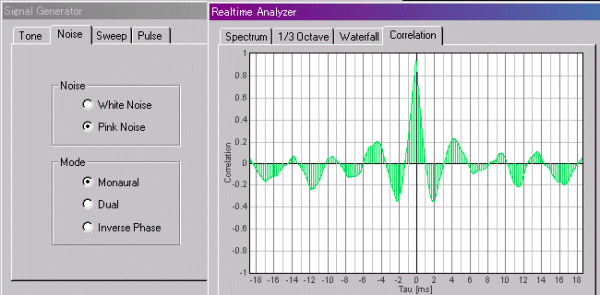
When the pink noise is generated with inverse phase, the peak of the correlation function becomes negative. By using this phenomenon, the phase of the speaker system can be checked.
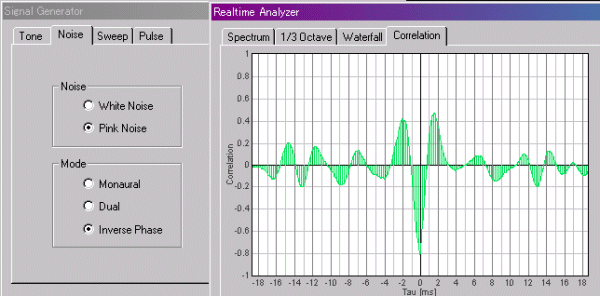
Correlation function was measured with the out of phase condition of the speaker.
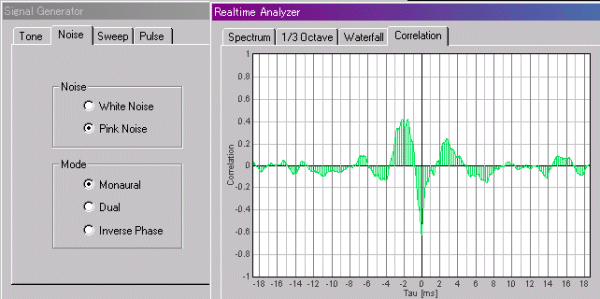
Although the pink noise is output monaurally, the correlation function has a negative peak. This is because the speakers are out of phase.
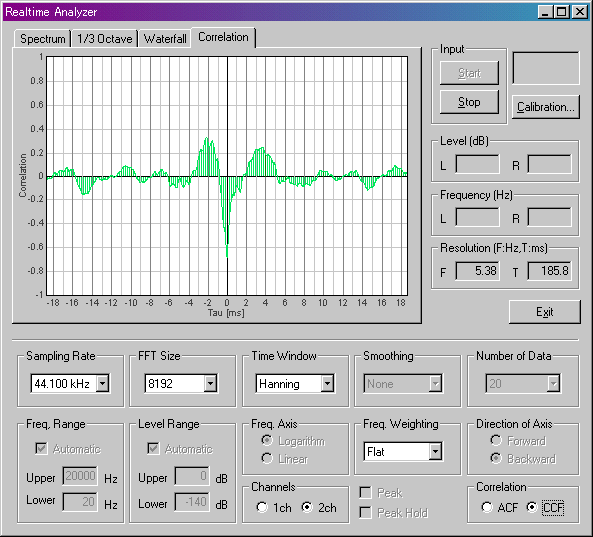
| In phase | (inphase.wav / 187KB) | |
| Out of phase | (outphase.wav / 188KB) |
The in phase sound is heard in the middle between the speakers, but the out of phase sound is heard as dull on one side and timbre is slightly changed.
Two microphones are needed for the measurement described in this page. If you use one point stereo microphone, sounds from two channels are mixed (cross talk), and it is difficult to measure sounds from two speakers correctly.
Two microphones should be placed at the same distance from the speakers to check the phase. Small difference has a large effect on the phase of sound. For example, the wavelength of the 1kHz sinusoidal is about 34 cm. When the distance is differed as 17 cm, the waveform is reversed even if the speaker is connected correctly.